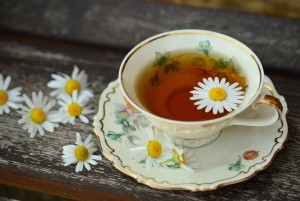There is a significant amount of information on the internet about which herbs to select for your horse, but there is very little information about exactly HOW to feed those herbs for optimal results. When it comes to dried herbs, it is my experience that most horse owners scoop the dried herbs into their horse’s feed and move on. This method however, does not deliver the most optimal medicinal result for your horse.
1. Herb Quality
The quality of the herbs that you use will determine the efficacy of the therapeutic action. Buy human-grade herbs from a reputable supplier and store the herbs in a cool, dry place in an airtight container. Dried herbs should be disposed of after one (1) year of storage.
2. Ensure Correct Dosage
There are so many over-the-counter herbal products on sale nowadays. On the positive side, this means that herbal medicines are now easily accessible to horse owners. Less exciting is the fact that many owners are under-dosing their horses and not experiencing the expected results. This is because many over-the-counter products recommend a minimum standard dose. If you are unsure how much to feed your horse, consult a qualified herbalist or refer to a reputable veterinary herbal text, such as Veterinary Herbal Medicine by Wynn and Fougere.
3. Rehydrate Dried Herbs
Whenever we use dried herbs in our kitchen, whether it be for cooking or to make a herbal tea, we always rehydrate those herbs (whether consciously or unconsciously). The act of rehydrating herbs does more than just increase their palatability, but also helps to release their active constituents.
To rehydrate your herbs, make a cup of herbal tea to pour over your horse’s hard feed by following the specific steps below:
i) Place the dried herbs into a non-metallic container. Metals react with some of the active constituents and render them ineffective.
ii) Pour 250ml of pure, clean water over the herbs. Boiling water should be used except on mucilaginous herbs, such a Slippery elm and Marshmallow, which should be mixed with cold water.
iii) Cover with an airtight lid and allow to brew for five (5) to fifteen (15) minutes. This ensures that the volatile oils do not escape with the steam (where applicable) and allows time for the active constituents to be released from the plant matter.
iv) After brewing, pour the tea and rehydrated herbs into your horse’s hard feed and mix through. If your horse is a fussy eater, you may wish to mix in some molasses or apple sauce to disguise the flavour.
4. Do You Need a Complementary Supplement?
Do your research. Some herbs work more effectively when combined with another supplement. For example, the active constituent in Turmeric, curcumin, is more readily absorbed when mixed with a lipid (fat), meaning that you should add a small amount of oil to your horse’s feed to increase absorption and effectiveness.


